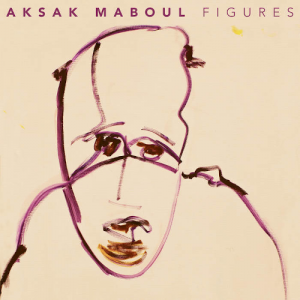 The Aksask Maboul story is an interesting one. Formed on 1977 by Crammed Discs supremo Marc Hollander and Vincent Kenis, they recorded two experimental and now hard-to-find LPs, covering all sorts of genres, before merging with the Belgian band Honeymoon Killers and releasing another couple of diverse albums in the ’80s.
The Aksask Maboul story is an interesting one. Formed on 1977 by Crammed Discs supremo Marc Hollander and Vincent Kenis, they recorded two experimental and now hard-to-find LPs, covering all sorts of genres, before merging with the Belgian band Honeymoon Killers and releasing another couple of diverse albums in the ’80s.
The album comes as two discs, housed in a lavish sleeve, adorned with Véronique’s artwork. It is the 300th Crammed release according to the catalogue number, and that is rather lovely symmetry. Inside, it is bursting with ideas, the train rhythm of the opening intro drifting into the slippery, post hip-hop beats of “C’est Charles”. The introduction to Véronique’s vocal style is here, working around the snippets of jazz piano and glockenspiel. Her voice is deep and beguiling, coming over like an older sister to Stereolab‘s Laetitia Sadier.
The vocals are central to most of the songs, but around them blaze various styles and textures. The bar piano and flute of “Taciturne” comes over like the soundtrack to the tour of an old castle, while the dub bass and jazzy inflections — including vibes — of “Silhouettes” brings to mind a lively party. In fact, at points it sounds as though some of the tracks were recorded with a shindig going on in the background! The sped-up church organ of “Histoire De Fous” is layered over another slippery rhythm, while the slightly disturbing lullaby “Sophie La Bevue” considers waltz time, but then decides against it. And if this wasn’t enough, this disc is seen out by the hypnotic unfolding of “Sgraffites”, full of train rhythms and melodica that turns into a drone experiment, splattered with clattering percussion.The idea of two discs is great, as you rather need a moment of reflection before starting part two.
*
The moody folk stylings and dissonant Americana thriller soundtrack of “The Untranslatable” are a pleasant surprise, but its syncopated beats and back-alley keyboards are over in a minute and a half, and says something about the wealth of ideas here. Elsewhere, the slow electronica and buffeted beat of “Retour Chez A” segue into the back and forth woman / man argument of “Dramuscule” that grows ever more heated and the pointed music matches the drama. When she spits “Je sors!”, you really believe it.There is the dank and clanging industrial groan on “Excerpt From Uccellini” with its bleepy abstraction, and the motorik yacht pretensions of “Un Caid”. Interestingly, there are a couple of tracks like this one that are again reminiscent of Stereolab, but the crazy piano noodle of “Martial Arts For Boys” and the gloopy cut and paste drone experiment of “Un Certain M” push those thoughts from your mind. “Ins Bleistiftgebie”‘ shares the cut-up mindset of Eyeless In Gaza, while the lilting piano of “Qu’est-ce Que C’est ‘Mot'” reminds me of Gastr Del Sol with its obvious loop backdrop.
Figures is an extraordinary feat of an album, which ends with the lovely unfolding story of “Tout A Une Fin”, full of drama and minor chord tension. It eventually hits an intense groove that disappears into the distance, evolving slowly. The album is a statement of musical joy, intoxicated with the capabilities of the studio and greedy with the desire to cram as much as possible into seventy-five minutes. As an album, this will take some beating; but I would love to see them try.-Mr Olivetti-



